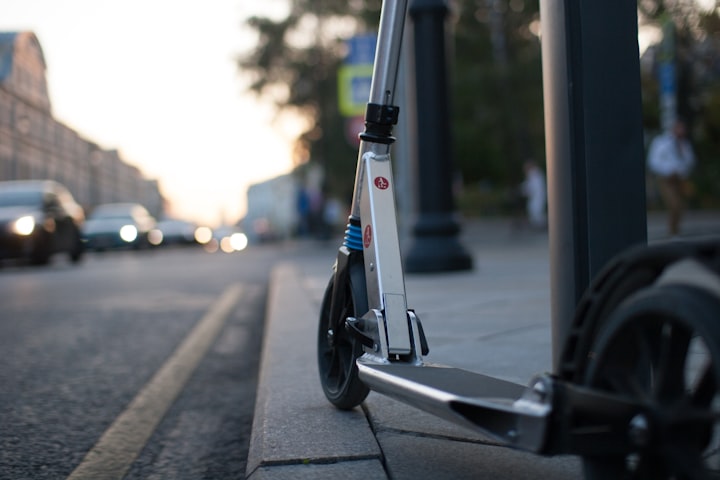
When your scooter’s batteries are running low, there are few things more aggravating in life than a missing or broken charger. As important as the gas station is to an automobile driver, the electric scooter charger is more than just an accessory. It is an integral component of the device. Please be aware that most of the information below applies to many different electric mobility scooter types as well, even though this page is largely on the electric scooter battery charger units used on small leisure scooters like the numerous Currie, Razor, and other models. The common motorcycle or light-duty automobile chargers with alligator clip connectors are used to charge the popular gasoline-powered motor scooters like the Vespa, Honda, or KYMCO models.
Every brand-new scooter comes with an owner’s handbook, and you should always abide by its instructions. The next step should be an internet search if the manual is not accessible. A lot of manufacturers’ websites provide model specification data charts, owners’ manuals, and other materials that may be downloaded as PDF files. There is still a way that will give a useful “guesstimation” of what battery charger would be suitable for their scooter if an internet search is unsuccessful. The connection type, voltage, and amperage are the three main requirements.
Connectors
The variety of charger-to-scooter connector types may be the most important but perplexing component of figuring out which electric scooter battery charger is best for your scooter. Sadly, there has never been a single industry-wide standard to control scooter charger electrical hookups. There are at least eight prevalent styles as long as things stay the same:
2-prong Female, not as common as the 3-prong style, this is still found on some smaller scooters
3-prong Female, identified by its three holes in a triangle, this is the most common connector for stand-up scooters
Coaxial, most are 5.5mm outside diameter — 2.1mm inside diameter plug; however BladeZ scooters used a proprietary 5.5mm outside diameter — 2.5mm inside diameter plug
XLR, very similar to the metal-shrouded connectors used in home audio and theater applications, the durable XLR connector is used many electric recreational, mobility scooters and power chairs
3-pin Shrouded Female (IEC C13), used primarily on electric bicycles, this is the familiar desktop computer power connector with three vertical slots
Modified 3-pin Shrouded Female, almost identical to the IEC C13, this e-bike connector is identified by a horizontal slot above the two vertical slots
Flat 4-pin, similar to that used for trailers, these connectors are mainly used on kids power ride-on toys (Power Wheels-type)
Direct Connect, these are the familiar alligator clip style that attach directly to your battery terminals
Adapters are available to match some dissimilar types of male and female connectors
Voltage Output
Electric scooter batteries function by being linked together, with each cell discharging its energy simultaneously and adding to the overall voltage, much as in a typical household flashlight. Almost all scooters employ a 24 volt or 36 volt electrical system, with the exception of a few 48 volt X-Treme and reverse-polarity Panterra models. Simply count the batteries if the correct voltage cannot be determined by looking at the side of the housing for the electric motor. A system with two 12 volt batteries has 24 volts, three batteries has 36 volts, etc.
Amp Output
How quickly an electric scooter battery charger completes its task depends on its amperage output. The higher or more amperage output, as indicated by ratings in amp hours (Ah), the quicker the recharging cycle. However, the size and price of the charger also rise as the amps do. A charger that is “too hot” for a low-amp battery also puts the battery at danger of overheating, harm, or even destruction. On the other hand, charging a high-amp battery will take what seems like an eternity on a low-amp charger. To find a practical happy medium between these extremes, utilize the list below:
5–6 Ah battery, uses a 0.4–1.0 Ah charger
7 Ah battery uses a 1.0–2.0 Ah charger
9–10 Ah battery uses a 1.5–2.0 Ah charger
12 Ah battery uses a 1.5–4.0 Ah charger
18 Ah battery uses a 1.5–5.0 Ah charger
31–35 Ah (or U1) battery uses a 3.0–8.0 Ah charger
50–55 Ah (or 22NF) battery uses a 5.0–8.0 Ah charger
75–110 Ah battery uses an 8.0 Ah charger
Mobility Scooters and Power Chairs
A factory-installed, on-board electric scooter battery charger made exclusively for that mobility equipment is used by many different manufacturers and types of mobility scooters and power chairs. OEM components from these manufacturers should never be changed; instead, a similar component from the scooter dealer or from an internet supplier of mobility scooter parts should be used instead. Before installing an on-board charger, please consult your owner’s handbook.
********
Disclaimer: This post is intended to some earning and learning. Thanks for reading.
Looking for interesting online product visit here>>>
Click here for Surprise!!!
#aftabvau
About the Creator
Aftab VAU
Like to read and write. and love to gather knowladge as much as i can...






Comments
There are no comments for this story
Be the first to respond and start the conversation.